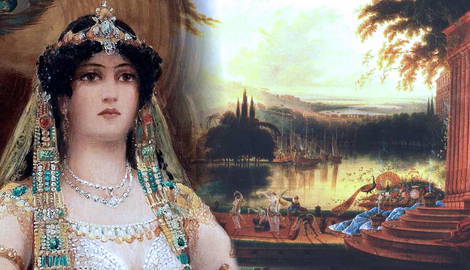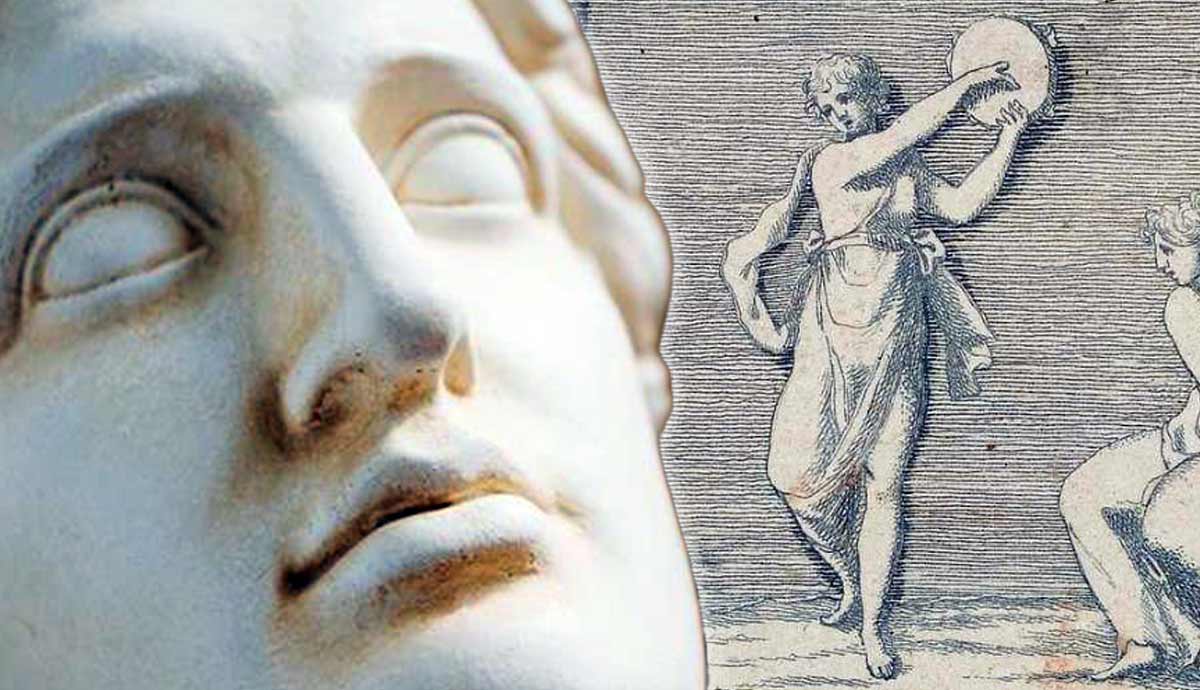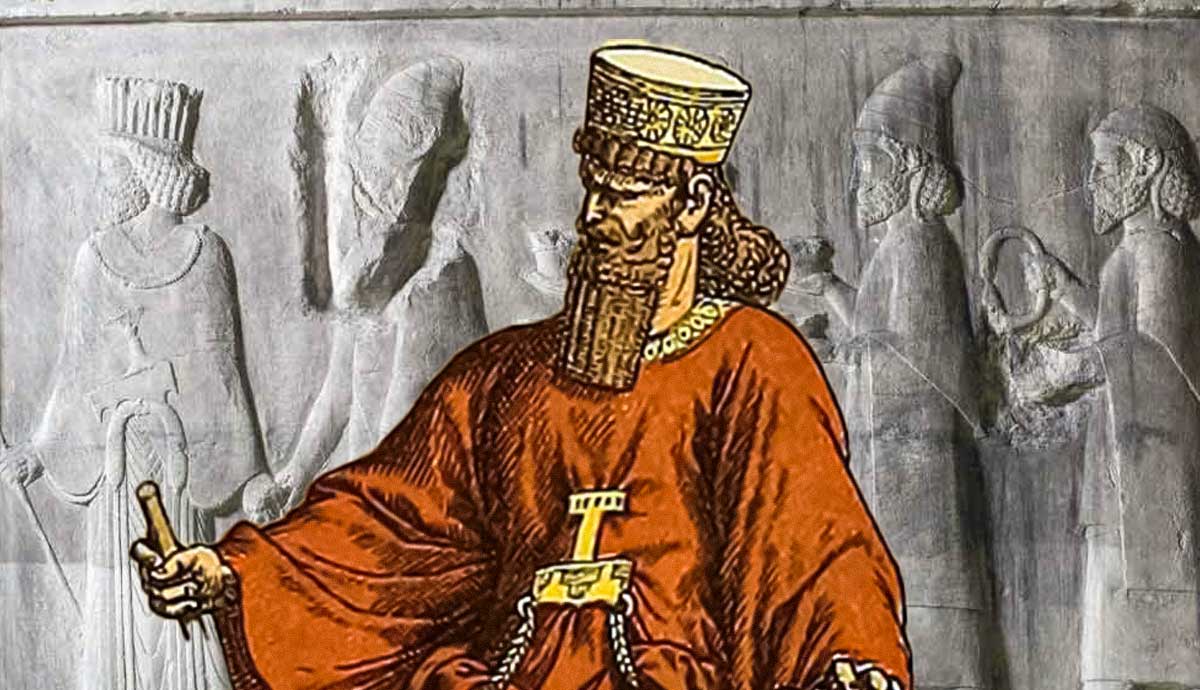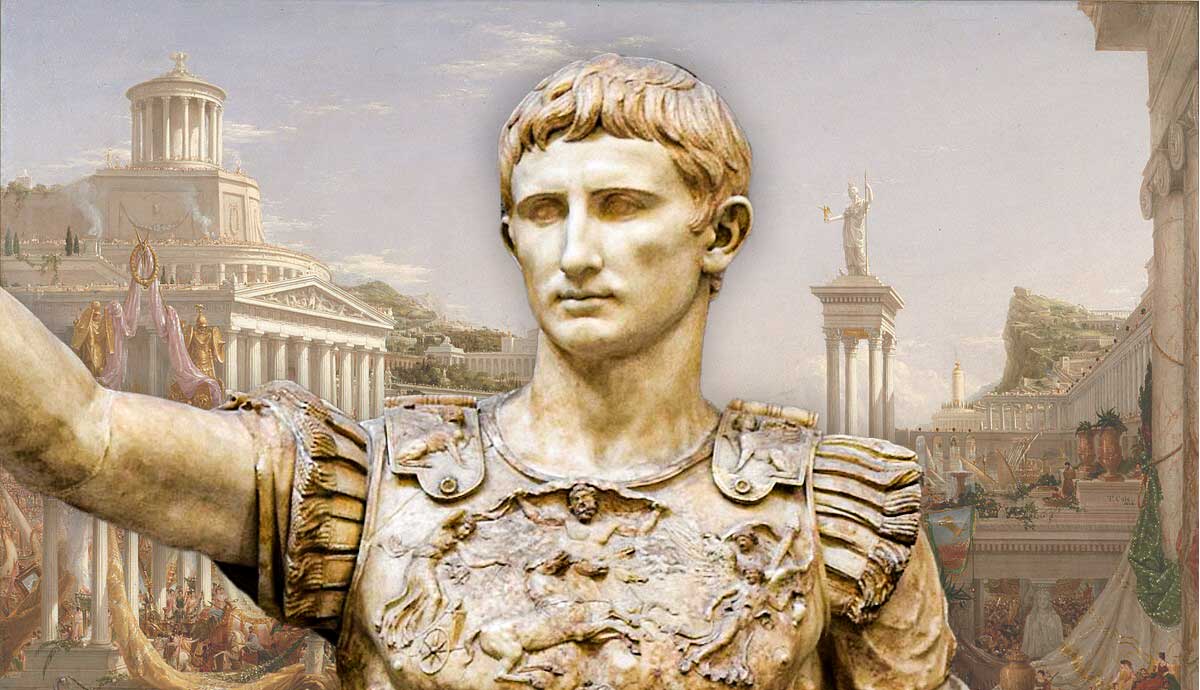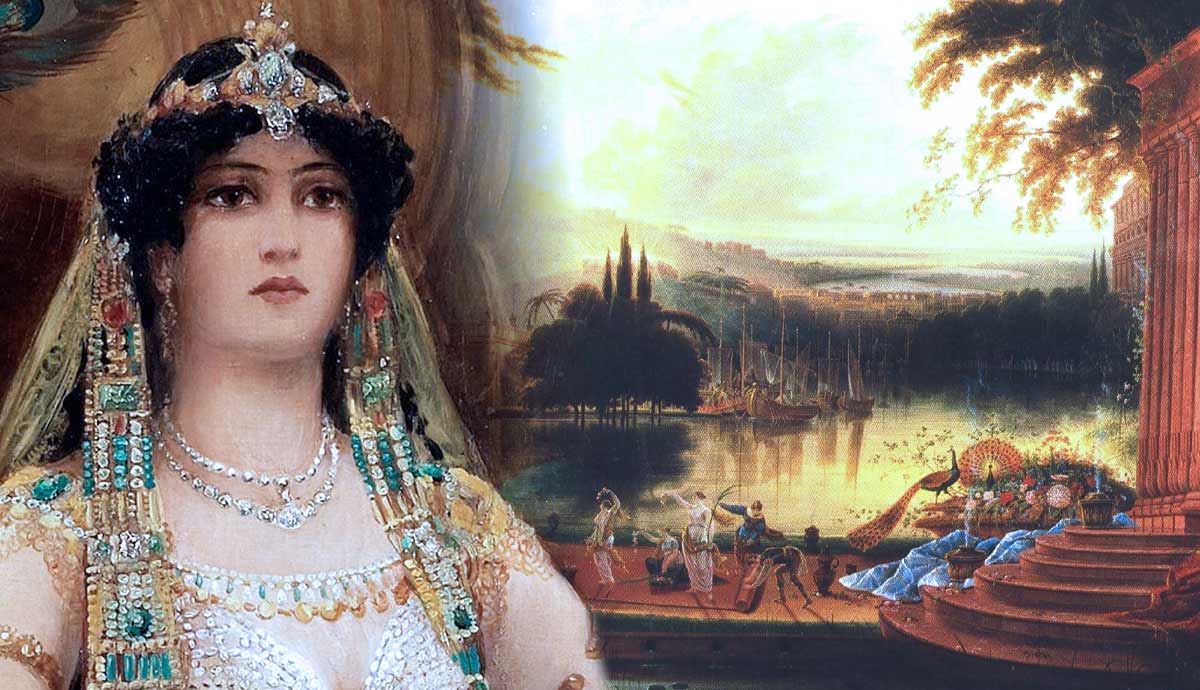
Strap on your metaphorical scuba gear because we’re about to dive into the murky depths of history, myth, and archaeological intrigue surrounding Saba—the golden land of the fabled Queen Makeda. What was Saba really like? How did its people live, and what did its cities look like? Most importantly, where was this elusive kingdom, and what evidence do we have that its queen ever crossed paths with King Solomon in Jerusalem? Get ready for a journey through trade routes, ancient ruins, and stories that have refused to sink quietly into the sands of time.
Yemen, Arabia, or Africa? Where Was Saba?

The enigmatic, fabled land of Saba—ancient, mysterious, and the subject of several somewhat reputable territorial claims. Historians, whether in one thought camp or the next, can’t actually know, with the current sum of the evidence found, where this golden kingdom ruled by the Queen of Sheba (named Makeda, according to the Ethiopian tradition) was actually located. However, this only makes sifting through the sands of time for more evidence all the more fun.
One strong contender is what we would call Yemen, nestled in southern Arabia, though it wouldn’t have been known by the same name at that time.
The ancient city of Ma’rib—complete with inscriptions in the Sabaean language and the ruins of the magnificent Marib Dam—is tangible proof of an ancient civilization with some form of organized and functioning government, a sort of code yelling to archaeologists, “We were here first!” This dam wasn’t just impressive; it was engineered on a scale that would make Roman aqueducts look simple. The Sabaeans grew quite wealthy controlling the Incense Route, which shipped frankincense and myrrh (yes, like those wise men gifted) across the Arabian Peninsula like some kind of ancient Silk Road, but more pleasingly aromatic.

While that seems like it could be a cut-and-dry argument for Yemen being the seat of Queen Makeda’s power, Ethiopia wouldn’t back down without quite a fight. According to the Kebra Nagast, Ethiopia’s national epic, Saba’s queen was none other than Makeda, the indomitable ruler who sojourned to weigh Solomon’s worth, left with a gift secreted in her womb (Menelik I, this child would be called), and birthed a Solomonic Dynasty that went on to hold power in Ethiopia for centuries of a golden age. The Ethiopian claim isn’t just mythic—it is proud. To this day, Makeda is celebrated as the literal mother of Ethiopia, which is a legacy no one’s giving up without strapping on some mighty boxing gloves.
To complicate things further, some historians theorize that there must be African ties beyond Ethiopia, all the way over in Nigeria. Could the Sabaeans have had outposts or cultural influence across sub-Saharan Africa? Maybe. However, this argument has less oral tradition or even physical archaeological clues to back it up than the others… for now.
Where was Saba, probably? The archaeological receipts favor Yemen, but Ethiopia’s got a cultural mic drop no one can ignore. Perhaps Saba was both—a kingdom straddling the Red Sea, where trade, power, and stories traveled back and forth. Wherever it was, Saba’s queen clearly did more than rule—she created a legacy so powerful that, thousands of years later, we’re still arguing over who gets to claim her. Bow down, historians. Makeda (or Sheba, or Bilqis, or Balqis) remains an undefeated titan.
What Would the Kingdom of Saba Have Looked Like?

If it was in fact this partite kingdom, Saba would have most likely been a semi-arid kingdom tucked between jagged mountains and sun-scorched valleys, where ingenuity turned a hard-to-farm landscape into a trading powerhouse. That is how historians imagine Saba looked—a land that didn’t just survive in the desert, but thrived, propped up by wealth from the incense trade. But what did it really look like? We have to make a few educated guesses based on archaeology, ancient texts, and a good ol’ slice of historical deduction.
The Sabaean environment wasn’t exactly a garden oasis—think less hanging gardens and more Australian Outback. Rainfall in southern Arabia was rare, but when it came, the Sabaeans treasured it more than gold. The famed Marib Dam, an extraordinary example of archaic engineering, redirected such precious water into terraced fields carved upon the mountainsides.
Archaeological evidence suggests they likely grew wheat, barley, grapes, and dates—essentially, your ancient subsistence staples. Despite this engineering success, the arid climate would have limited their agricultural bounty, meaning imports were key to their survival.
Exotic goods—Egyptian papyrus, Indian spices, maybe even African ivory—would’ve flowed through their markets, a testament to their savvy dominance and administration of trade routes.
As for their cities, historians and archaeologists think Sabaean urban centers like Ma’rib and Sirwah were most likely fortified hubs bustling with merchants and religious leaders. Picture multistory stone buildings—practical, sun-bleached, and wind-scarred—designed not for opulence but endurance in harsh conditions. This wasn’t a place of bright colors like a rainbow of petals, instead, temples dedicated to the sun and moon gods, their chief deities, would have dominated the skyline. These weren’t flimsy desert tent cities—they were sturdy, lasting metropolises of stone that spoke to the Sabaeans’ resourcefulness. In comparison to subtropical Jerusalem with its rainy but mild cool season, Saba would have both looked and felt quite different.
Would Saba’s People Have Been Black, Brown-Skinned, or a Mix of Everything?

Following that deep dive into Saba’s cities, it is fair to now ask—what did the people of Saba look like? However, we’re probably more focused on this than the people who lived at the time would have been. Ancient folks just cared less about race, because their focus was more on lineage, culture, and who one worshiped. But in order to answer this question, a modern inquisitive mind must look at geography, trade routes, and the broader Semitic world to make some pretty reasonable assumptions.
If, as previously postulated, Saba long ago sat smack-dab in southern Arabia, a crossroads where Africa, the Middle East, and South Asia converged—basically the ancient world’s bustling airport terminal, then it is fair to assume the people of Saba would have reflected this cosmopolitan mix. Their neighbors to the west were Ethiopians and Nubians, with dark skin tones that are richly represented in Egyptian art. To the north and east? The Arabian Peninsula, whose inhabitants likely shared the lovely spectrum of brown complexions common to Semitic peoples still living in the region today. All this, without forgetting the endless flow of merchants, travelers, and tradespeople trekking along the incense routes, mingling and mixing cultures (and, let’s be real, genetics) as they met.
When modern folk bring up the “Blackness” of the Queen of Sheba—or her people—it is often because of the Ethiopian tradition, in which Makeda is celebrated as the originator of their royal line. Ethiopian tradition proclaims her their queen, with her lineage considered African and unequivocally Black. It is a powerful narrative that reflects Ethiopia’s deep pride in its cultural and historical legacy.

Meanwhile, Arabian connections to Saba tie its people to the Semitic populations of the Middle East. Given the shared linguistic and cultural roots with neighboring civilizations like the Canaanites and Assyrians, Sabaeans would likely have shared physical traits common across the ancient Near East—brown skin, and dark hair, all of which are biological gifts that contribute to better surviving under a brutal sun.
Here is the kicker, though: Saba wasn’t a closed-off society. Trade brought wealth, influence, and people. Genetic diversity would have been baked into the population, thanks to their deep connections to Africa, Arabia, and even farther-flung regions like India. So, were Saba’s people Black? Brown? A glorious mix of everything? Probably yes, to all of the above. While we modern historians (and armchair historians) wrestle with these questions, yearning to create the most accurate mental picture of what Saba would have been like, the actual people of Saba were probably too busy hauling myrrh across the desert to care.
What Would the Queen’s Retinue Have Looked Like?

Imagine for a second the Queen of Sheba’s caravan stretching across the horizon, shimmering in the desert heat like a mirage. But this isn’t just a royal road trip—it is a power move, a PR campaign, and a logistical nightmare for her retainers all rolled into one. The queen didn’t just stroll into Jerusalem with a chest of clothing and hope for some sort of alliance. Her retinue was a statement, designed to knock King Solomon’s (and the people he ruled over’s) socks off and let him know Saba was not to be underestimated.
The core of her entourage was a vast array of camels, each one loaded down with a treasure of her kingdom: gold, gemstones, and pricey spices like frankincense and myrrh. Camels were the SUVs of their day, hardy and reliable for long journeys across arid terrain. Their inclusion in biblical accounts wasn’t just practical—it was pointed. Camels exuded wealth, trade connections, and a mastery of the harsh desert environment.
Her human entourage would have been just as opulent to the eye. Picture rows of attendants, servants, and advisors, some handling the day-to-day needs of the caravan and others acting as the queen’s mobile brain trust. Since Saba was a melting pot of African, Arabian, and even South Asian influences, her retinue likely reflected that diversity both in the look of the people and their clothing. Arguably, there were probably at least some armed guards. You don’t cross hundreds of miles of desert, hauling shockingly precious goods, without relying on some muscle. Therefore, the telltale glint of weaponry and armor would have drawn the eye of any witness to this mobile court. For Solomon and his city, the sight of this retinue would have been jaw-dropping.
Would There Have Been a Culture Clash?

Two powerful monarchs staring across the gleaming floors of Solomon’s palace, sizing each other up like heavyweight champs in a diplomatic sparring match—it could be the opening scene in an epic film. Here was Makeda (aka Balqis or Sheba), perfectly comfortable in her role as queen and dripping in finery, arriving at the palace of a man whose women, whether wives, concubines, or even daughters, were kept separate and nowhere near equal in a harem.
The Bible makes it clear that the Queen came “to prove him with hard questions” (1 Kings 10:1)—which is an elegant way of saying she wasn’t about to be dazzled by Jerusalem’s golden rooftops and flowing robes without testing the man who was apparently a living legend. Solomon passed her tests, but his court would’ve been just as curious about her. The Sabeans, with their sun-worshiping faith, incense-laden trade networks, and multicultural society, would’ve seemed as exotic to the Israelites as Solomon’s God-centered kingdom and Torah laws might have to Makeda.

On matters of faith alone, their entourages and governing principles would have been worlds apart. Solomon ruled a people who prided themselves on monotheism—one God, one temple, and one king appointed by divine will. Makeda, by contrast, came from a kingdom where the sun itself was sacred, where gods and spirits may have shared space in a vibrant spiritual cross-cultural pantheon. Her priests and advisors likely brought incense and prayers to honor their sun deity, which would have been eyebrow-raising for Solomon’s prophets, to put it mildly. Meanwhile, Makeda might have side-eyed Solomon’s harem—a group consisting of hundreds of wives and concubines—and wondered how a ruler of such wisdom found the time for anything else.
Then there’s the matter of clothing. The Sabeans likely dazzled with bright, flowing fabrics—reds, golds, and yellows to echo the sun they worshiped—while the Israelites wore earthier tones of flax and wool, reflecting their agrarian roots. Jewelry would have been another point of contrast: the Sabean court, dripping in gold and gemstones from their trading connections, would’ve made Solomon’s people look like full adherents to minimalism.

It is almost funny trying to imagine Makeda, the Queen, approaching the encounter on equal footing with Solomon, demonstrating that women could wield power independently and command respect, even if that wasn’t the way in Jerusalem. This subversion of gender norms is significant—she was not merely a diplomatic envoy but a formidable ruler in her own kingdom, showcasing the complexities of power relations in the ancient world. Imagining her presence in Solomon’s palace, engaged in dialogue and debate without subservience, illustrates a bold assertion of identity and leadership.
The Qur’an adds another layer of cultural richness to the meeting. In its version of the story, Solomon shows off his palace, including a floor so polished and clear that Makeda thinks it is water. When she lifts her robes to avoid getting wet, Solomon essentially tells her, “That’s glass, not a puddle, my dear.” It’s a small moment, but one that drips with metaphor. Solomon’s wisdom is meant to reveal truth, to strip away illusions. Were there things, much like his polished floor, in Makeda’s court that Solomon would’ve found strange or revolutionary? Probably, but he never made the trip to her land to find out.
So, would it have been a culture clash? Absolutely. Yet the Bible and Qur’an also agree that mutual respect emerged from the encounter. Two rulers, two cultures, and one unforgettable meeting that has kept historians and storytellers diving back in ever since.
What Evidence Do We Have That the Queen Crossed Paths With Solomon?

Frankly, there is no smoking-gun piece of proof. Instead what’s left to us is tantalizing scraps of evidence that keep historians up at night. The Bible says the Queen of Sheba traveled to Jerusalem with, “a very great retinue, with camels bearing spices and very much gold and precious stones” (1 Kings 10:2). Her gifts—incense, frankincense, and treasures—imply a kingdom rich in the kinds of resources only certain regions could boast, like Ethiopia, Somalia, Oman, or Yemen.
Ancient Assyrian records mention Sabaean kings like “Karib-ilu,” names that match those of rulers recorded in historic inscriptions uncovered in Yemen. Excavations in Marib, Saba’s ancient capital, revealed the ruins of Mahram Bilqis, or Temple of Bilqis—a temple named for the Queen of Sheba in later Islamic tradition. Coincidence? It could be, but it adds weight to the idea that the queen had a kingdom worthy of legends and was a leader worthy of building a temple to honor her.

Saba’s location along major trade routes also linked it to kingdoms as far as Egypt, Persia, and Mesopotamia, meaning ties to Jerusalem wouldn’t have been out of the question. After all, precious incense from Saba was in high demand, even finding its way into the First Temple rituals as mentioned in Exodus 30:34. Other pieces of evidence and ancient texts, such as Strabo’s accounts of the region, describe a land overflowing with myrrh, frankincense, and luxury goods—the very riches the queen supposedly traveled with.
So, did Makeda or Balqis actually step into Solomon’s palace? No one alive can say for certain. We’re left to follow the textual breadcrumbs, the trade connections, and Saba’s proximity to the known powerhouses of the ancient world. Educated guesses can only point to it not being outside the bounds of possibility that the Queen of Sheba—resplendent, sharp-witted, and accompanied by her dazzling retinue—arrived in Jerusalem and left it just as wealthy and independently powerful as she was upon her arrival, a story destined to endure for millennia.
